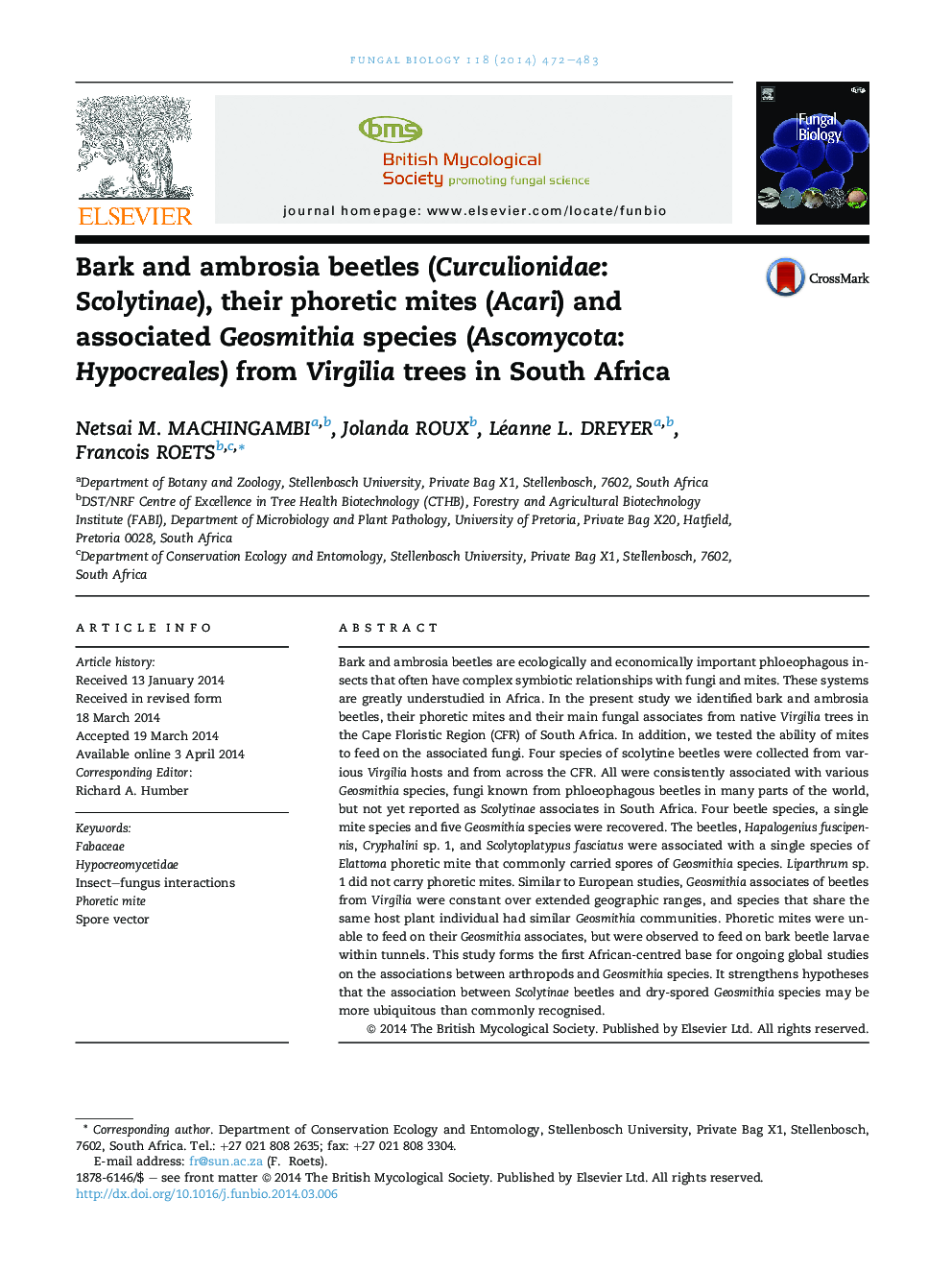| Article ID | Journal | Published Year | Pages | File Type |
|---|---|---|---|---|
| 4357025 | Fungal Biology | 2014 | 12 Pages |
•Geosmithia was identified as common associate of bark beetles in South Africa.•Five species were recovered from four beetle species and their phoretic mites.•Geosmithia communities of beetles were constant over extended geographic ranges.•Co-occurring beetle communities had similar Geosmithia communities.•We strengthen hypotheses of a strong global association between bark beetles and Geosmithia.
Bark and ambrosia beetles are ecologically and economically important phloeophagous insects that often have complex symbiotic relationships with fungi and mites. These systems are greatly understudied in Africa. In the present study we identified bark and ambrosia beetles, their phoretic mites and their main fungal associates from native Virgilia trees in the Cape Floristic Region (CFR) of South Africa. In addition, we tested the ability of mites to feed on the associated fungi. Four species of scolytine beetles were collected from various Virgilia hosts and from across the CFR. All were consistently associated with various Geosmithia species, fungi known from phloeophagous beetles in many parts of the world, but not yet reported as Scolytinae associates in South Africa. Four beetle species, a single mite species and five Geosmithia species were recovered. The beetles, Hapalogenius fuscipennis, Cryphalini sp. 1, and Scolytoplatypus fasciatus were associated with a single species of Elattoma phoretic mite that commonly carried spores of Geosmithia species. Liparthrum sp. 1 did not carry phoretic mites. Similar to European studies, Geosmithia associates of beetles from Virgilia were constant over extended geographic ranges, and species that share the same host plant individual had similar Geosmithia communities. Phoretic mites were unable to feed on their Geosmithia associates, but were observed to feed on bark beetle larvae within tunnels. This study forms the first African-centred base for ongoing global studies on the associations between arthropods and Geosmithia species. It strengthens hypotheses that the association between Scolytinae beetles and dry-spored Geosmithia species may be more ubiquitous than commonly recognised.
